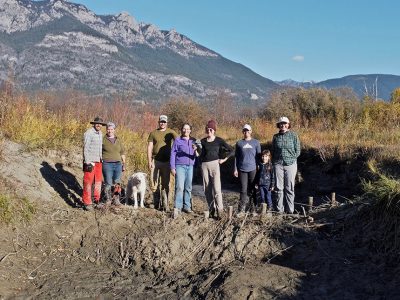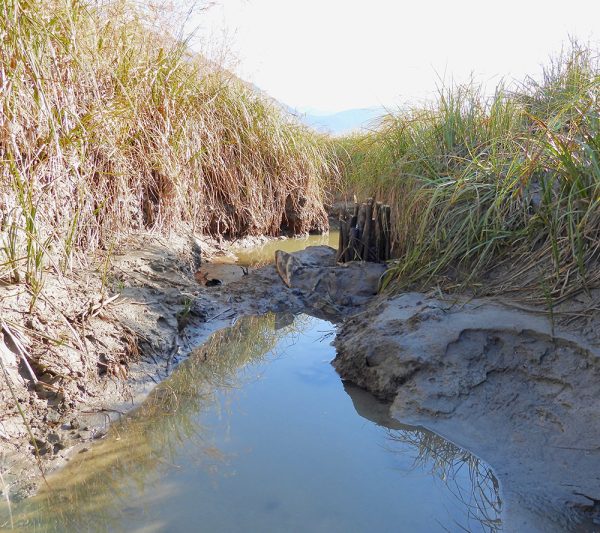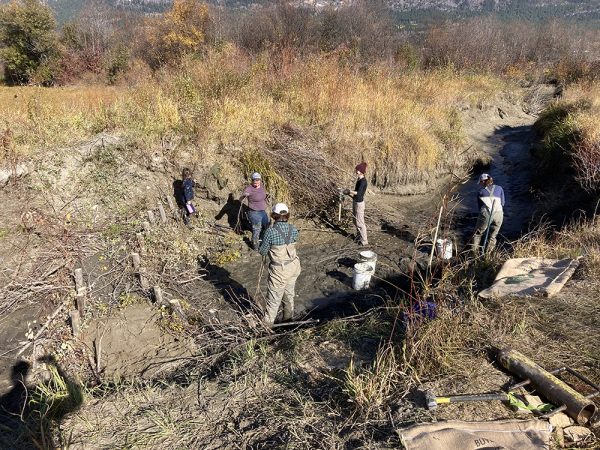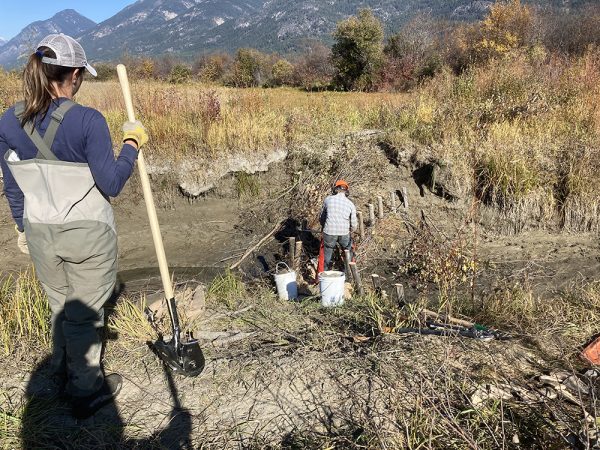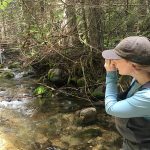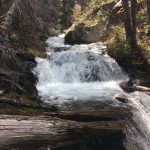Shining a spotlight on a Canadian star for World Wetlands Day
According to the Convention on Wetlands, we are losing wetlands three times faster than forests — nearly 90% of the world’s wetlands have been degraded since the 1700s. Yet, when intact, wetlands are among the most productive ecosystems globally, contributing to biodiversity, climate mitigation and adaptation, freshwater availability, world economies and more. World Wetlands Day is the ideal time to raise awareness about wetlands in order to reverse their rapid loss and encourage actions to conserve and restore them.
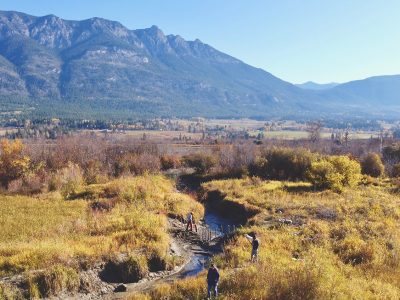
The site of the Living Lakes Canada and Columbia Wetlands Stewardship Partners restoration project in the Columbia Wetlands. Photo by Annie Pankovitch/CWSP
The Columbia Wetlands in southeast B.C. are of particular relevance to Living Lakes Canada. Our organization was founded at the headwaters of the Columbia River, where the 180-kilometre long Columbia Wetlands floodplain complex provides critical habitat to upwards of 65 species at risk and concern, and performs priceless ecosystem functions in the way of flood control, groundwater recharge, water purification, carbon sequestration and countless more. While approximately 60% of the Columbia Wetlands are protected from direct human disturbance, about 40% are unprotected. Nor are the wetlands protected from activities adjacent to these areas, or from losses of water and climate change impacts.
In an effort to restore critically important water levels in a targeted area of these wetlands, the Living Lakes Canada Watershed Restoration Program has supported an innovative project led by the Columbia Wetlands Stewardship Partners (CWSP) and inspired by Canada’s national animal — the hard-working beaver.
In October 2021, Living Lakes program biologist Kyle Prince joined the CWSP restoration team in an area of the Columbia Wetlands identified as vulnerable to hydrological changes to construct a human-made beaver dam (known as a Beaver Dam Analogue) with the aim of encouraging beavers to take it over as their own.

The restoration team at work constructing a beaver dam analogue with natural materials. Photo by Annie Pankovitch/CWSP
“Installing structures that mimic beaver dams in strategic locations will kick-start and stabilize natural processes by providing a site for beavers to enhance and eventually maintain over time,” says Prince. “A key point of this technique is ‘letting the system do the work’, which defers critical decision making to natural processes and nature’s ecosystem engineers — like beavers.”
Beavers are increasingly being recognized as one of the most cost-effective and sustainable solutions for restoring watershed — and wetland — health. Their natural activities (i.e. building beaver dams) help maintain water levels in wetlands and streams, which creates healthy habitats for a wide variety of plant, animal and insect species. Stable water levels also contribute to groundwater recharge, which strengthens water supply and resilience to drought.
A Youth Climate Corps team helped repair and improve a beaver dam analogue in the Columbia Wetlands as part of a two-week watershed restoration and water monitoring training that Living Lakes Canada offered in tandem with Wildsight in November. The group of youth were extremely engaged and excited to have a hands on opportunity to work on a project that improves climate resiliency on the landscape. That blog can be read here.


